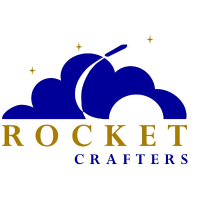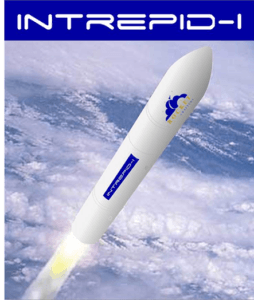 We’ve heard a lot about 3D printed rockets and rocket components over the last few years, thanks largely to NASA’s ongoing efforts to create the first fully 3D printed rocket engine. One thing I never even thought of, however, is 3D printed rocket fuel. It doesn’t sound possible – but as we keep learning, almost nothing is impossible to 3D print, and a Florida-based company named Rocket Crafters, Inc. (RCI) was just granted a patent for, yes, 3D printed rocket fuel.
We’ve heard a lot about 3D printed rockets and rocket components over the last few years, thanks largely to NASA’s ongoing efforts to create the first fully 3D printed rocket engine. One thing I never even thought of, however, is 3D printed rocket fuel. It doesn’t sound possible – but as we keep learning, almost nothing is impossible to 3D print, and a Florida-based company named Rocket Crafters, Inc. (RCI) was just granted a patent for, yes, 3D printed rocket fuel.
Admittedly, the fuel grains created by RCI aren’t exactly what you might typically picture when you think of fuel. Rather than liquid or gas, fuel grains are large tube-shaped structures that act as both solid fuel and combustion chambers for hybrid rocket engines. The engines are designed by combining the solid fuel grains, often created from materials like rubber or wax, with a liquid oxidizer.
The patent was granted to RCI co-founder, President and CEO Ronald Jones, who developed a method for designing and fabricating fuel grains for hybrid rocket engines using additive manufacturing technology. The fuel, according to RCI, is less expensive and safer to handle than other types of fuel grains, while offering excellent performance.
Using 3D printing allows for the fabrication of precise internal geometric patterns that greatly increase the amount of fuel available for combustion on a second-by-second basis. The design also eliminates excessive vibration, one of the most common issues of hybrid rocket engines.
“This revolutionary patented technology enables for the first time the use of much safer, consistent performing hybrid rocket engines to power orbital launch vehicles,” Jones said. “The fuel grains we are able to produce using this technology provides the structural strength needed to minimize vibration build-up while still enabling the rocket engine to consume high energy solid fuel blends at an accelerated pace.”
The 3D printed fuel will allow for the design of a safe, less expensive launch vehicle with only two moving parts. According to Jones, 3D printing the combustion chamber will allow RCI’s expendable motors to launch small satellites into orbit at half the cost of current launch costs.
 RCI is currently in the process of developing the Intrepid-1, the first mass-producible orbital launch vehicle powered by rocket engines using Jones’ new 3D printed fuel technology. The company is on track to incorporate the engines into orbital launch vehicles in 2019.
RCI is currently in the process of developing the Intrepid-1, the first mass-producible orbital launch vehicle powered by rocket engines using Jones’ new 3D printed fuel technology. The company is on track to incorporate the engines into orbital launch vehicles in 2019.
“RCI continues to innovate. This new patent shows our commitment to making access to space safer, more reliable, and more affordable than ever before,” said former NASA astronaut and retired Sandia National Laboratories executive Sid Gutierrez, Chairman and CEO of RCI. “I have believed for years that hybrid rockets, due to the inherent safety when propellants are protected against accidental detonation by storing them in different states, could be the solution to make rocket powered flight as safe as airline travel one day. With our 3D printed fuel technology, we now have the means to make this a reality.”
The patent for the 3D printed fuel (Patent US 9,453,479) is the latest in a growing collection of patents and pending applications for RCI. Discuss in the Rocket Crafters forum at 3DPB.com.
Subscribe to Our Email Newsletter
Stay up-to-date on all the latest news from the 3D printing industry and receive information and offers from third party vendors.
Print Services
Upload your 3D Models and get them printed quickly and efficiently.
You May Also Like
Honeywell Qualifies 6K Additive’s Nickel 718 for 3D Printed Aerospace & Defense Parts
6K Additive is renowned for manufacturing sustainable additive manufacturing (AM) powder, and offers a wide portfolio of premium metal and alloy powders that include titanium, copper, stainless steel, and nickel,...
AM Research Says 3D Printing Could Be Responsible for Half the Parts on Launched Satellites by 2033
The satellite industry has grown significantly in the last decade. In the “new space race” between the more industrialized nations of the world, stiff competition has resulted in new and...
AM Research Webinar: How Continuum Turns Nickel Scrap into Cost Savings & Sustainability
Continuum Powders, a supplier of metal additive manufacturing powders, is on a mission to develop solutions that empower industries to optimize resources and reduce waste. And it’s not just lip...
AM Research: Satellites Identified as Major 3D Printing Market Growth Opportunity
Over the last ten years, the satellite industry has grown significantly. In the “new space race” going on between the more industrialized nations of the world, stiff competition has resulted...





































